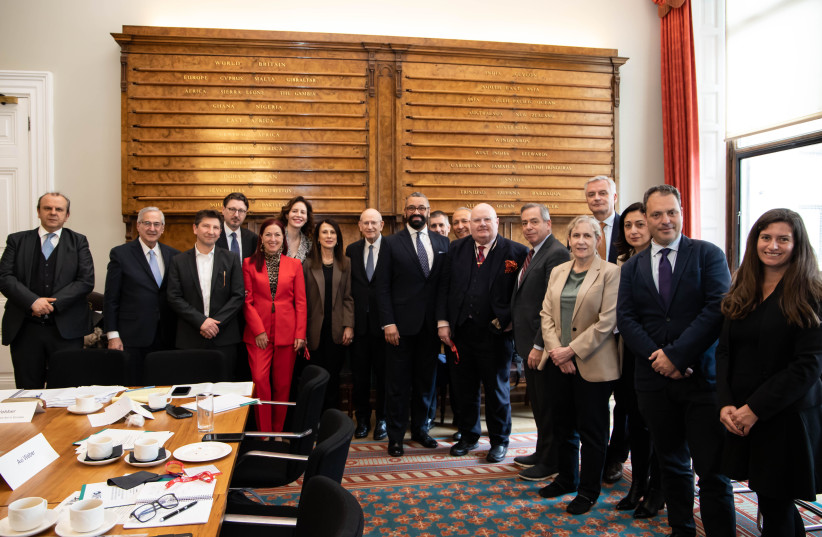UK hosts first international forum of envoys for post-Holocaust property restitution

More than 20 envoys from over 10 countries discussed how to obtain justice for Holocaust survivors, whose property was seized during the Shoah.
UK Special Envoy for Post-Holocaust Issues Lord Eric Pickles and the World Jewish Restitution Organization (WJRO) hosted the first-ever international gathering of Holocaust envoys on Tuesday, to discuss initial steps in building a network of envoys across the world to address Holocaust-era property restitution. Also in attendance were ambassadors, experts and other dignitaries.
At the meeting, more than 20 international representatives from over 10 countries discussed how to obtain justice for Holocaust survivors and their families, who not only lost loved ones but also had their homes, businesses, communal property, art and cultural property seized during the Shoah.
“Often Holocaust survivors talk to me about personal items like books and spoons – sometimes that is the only evidence on earth that the person actually existed,” Pickles said. “Their looted artworks are also in plain sight – on the walls of museums and private collections. Most often, people aren’t looking for money – they are looking for recognition, for dignity.”
Restitution and compensation
US Special Envoy for Holocaust Issues Ellen Germain said that the meeting was an important gathering of Holocaust envoys “to discuss restitution and compensation and how to encourage countries in Eastern and Central Europe that have not yet done so to take action to address the injustices of the past.
“This is a powerful opportunity to do something right, something meaningful,” she said.
WJRO Chair of Operations Mark Weitzman said that “we have had to overcome the lack of political will [that was] in the past. US Secretary of State [Antony] Blinken has made clear that he takes a great interest in this” Holocaust-era property restitution.
Ambassador Yossef Levy, Israel’s Special Envoy for the Restitution of Holocaust Era Assets, explained that “this process of restitution has been unfortunately long and slow.” He said that “after the Holocaust, the first priority was to take care of the Holocaust survivors. The next step was to bring the perpetrators to justice. Now it is the last part of the story, and we have a much bigger focus also on property restitution.”
He mentioned the Terezin Declaration issued by 47 countries in 2009 that recognizes “the importance of restituting or compensating Holocaust-related confiscations made during the Holocaust era between 1933-45.” Almost 80 years after the Holocaust, however, only a small fraction of private and communal immovable and movable property illegitimately seized from Jewish victims has been returned or compensated for.
The declaration also affirms “the importance of recovering communal and religious immovable property in reviving and enhancing Jewish life, ensuring its future, assisting the welfare needs of Holocaust survivors, and fostering the preservation of Jewish cultural heritage.”
The 1998 Washington Conference Principles on Nazi-Confiscated Art, endorsed by 44 countries, established principles concerning the restitution of art confiscated by the Nazis that was not subsequently restituted, including principles for countries to search provenance to identify stolen art, and to publicize the information.
The conference was attended by representatives and special envoys of governments and entities such as Germany, Canada, UK, US, European Union, Austria, Greece, Croatia, France, Czech Republic, Israel and the Netherlands.
Jerusalem Post Store
`; document.getElementById("linkPremium").innerHTML = cont; var divWithLink = document.getElementById("premium-link"); if (divWithLink !== null && divWithLink !== 'undefined') { divWithLink.style.border = "solid 1px #cb0f3e"; divWithLink.style.textAlign = "center"; divWithLink.style.marginBottom = "15px"; divWithLink.style.marginTop = "15px"; divWithLink.style.width = "100%"; divWithLink.style.backgroundColor = "#122952"; divWithLink.style.color = "#ffffff"; divWithLink.style.lineHeight = "1.5"; } } (function (v, i) { });

